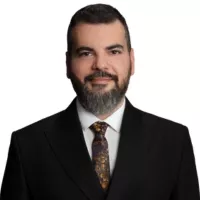- within Food, Drugs, Healthcare and Life Sciences topic(s)
- within Insolvency/Bankruptcy/Re-Structuring topic(s)
Rare diseases, while creating a distinct area within healthcare systems due to the challenges in diagnosis and treatment, are associated with drugs that are considered "orphan" because of their limited market potential. These drugs are supported through legal incentives in various countries. Regulations and incentive mechanisms for orphan drugs are implemented worldwide, particularly in the United States and the European Union. In Türkiye, access to orphan drugs is provided through pathways such as the Named Patient Program and the Compassionate Use Program.
In recent years, rare diseases have garnered increasing attention in the pharmaceutical sector, primarily due to their growing prevalence and the lack of standard diagnostic and therapeutic solutions. According to the definition recognized by the European Union ("EU"), a disease is classified as "rare" if it affects no more than 1 in 2,000 individuals.1 Owing to the limited patient population, R&D or treatments is often both complex and financially burdensome, resulting in a restricted number of available therapies. In response to this challenge, the concept of the "orphan drug" emerged, referring to medicinal products intended for the diagnosis, prevention, or treatment of rare conditions. Globally, various legal frameworks have been established to support the development and commercialization of such drugs. This article examines rare diseases, the evolution of orphan drugs, international regulatory frameworks, and the current landscape in Türkiye.
Definition and Impact of Rare Diseases
Rare diseases are typically chronic conditions of unknown etiology, characterized by the absence of a definitive treatment, a high risk of disability, and significant emotional and financial burdens for patients and their families.2 Examples include Cystic Fibrosis, Spinal Muscular Atrophy (SMA), and Familial Mediterranean Fever (FMF). These diseases differ significantly from more common conditions in both clinical and policy contexts. Accordingly, national and international organizations have been established to serve as information hubs, policy advisors, and financial supporters of pharmaceutical initiatives. Key objectives of these organizations include raising public awareness, promoting research, and facilitating access to treatment.3 Prominent entities include the European Organization for Rare Diseases (EURORDIS), Orphanet, the French National Institute of Health and Medical Research (INSERM), the National Organization for Rare Disorders (NORD), and the Japanese Organization for Rare Diseases (SORD).
Orphan Drugs: Emergence and Definitions
The term "orphan drug" was first codified in the United States ("U.S.") with the passage of the Orphan Drug Act of 1983. This act marked the first significant legislative initiative to promote the development of treatments for rare diseases. Under this framework, the U.S. Food and Drug Administration (FDA) defines an orphan drug as a medical product intended for a condition affecting fewer than 200,000 individuals in the U.S. The European Medicines Agency (EMA) provides a similar definition, referring to drugs used in the diagnosis, prevention, or treatment of life-threatening, chronic, and severely debilitating conditions affecting fewer than 10,000 persons in the EU.4 The number of designated orphan drugs has risen substantially over time. As reported by EvaluatePharma in 2017, Europe saw an increase from 82 new orphan drug designations in 2006 to 208 in 2016.5
International Regulatory Landscape
Following the U.S. model, other jurisdictions implemented their own orphan drug regulations; Singapore in 1991, Japan in 1993, and Australia in 1998. The United States further strengthened its policy with the Rare Diseases Act of 2002, which led to the establishment of the Office of Rare Diseases Research under the National Institutes of Health (NIH), tasked with facilitating clinical research and inter-institutional collaboration.
Similarly, the EU has taken a structured approach to rare disease policy since the 1990s. The initial Community Action Program on Rare Diseases (1999–2003) was introduced to enhance data access and strategic coordination. Subsequent initiatives such as EUROPLAN and the European Reference Networks further supported the development of national action plans. The first specific regulation on orphan drugs was enacted through European Council Decision 95/C 350/03 in 1995, which outlined eligibility criteria including disease rarity, severity, and absence of alternative treatment.6
Legal and Regulatory Context in Türkiye
Unlike jurisdictions such as the EU and U.S., Türkiye does not currently have a dedicated legislative framework for orphan drugs. This places Türkiye in line with countries such as China, India, Canada, Israel, North Macedonia, Serbia, and Switzerland,7which similarly lack orphan drug-specific legislation Despite this, patients in Türkiye may access orphan drugs through the Named Patient Program ("NPP") and the Compassionate Use Program ("CUP"). The NPP facilitates the importation of unlicensed medicinal products for patients who have exhausted all licensed treatment options or for whom such options are inaccessible. The CUP allows access to investigational drugs that have completed at least Phase II clinical trials and are not yet authorized in Türkiye, particularly for life-threatening conditions. Additionally, access may be provided, under specific conditions, via the Social Security Institution and the Turkish Pharmacists' Association. You can access our article, in which we examine the issue of access to orphan drugs in Türkiye in detail, here.
Conclusion
Rare diseases and the corresponding category of "orphan drugs" have become increasingly significant within the broader context of global public health and pharmaceutical regulation. While progress in this field hinges on substantial public and private sector collaboration, it is particularly contingent upon legislative and financial support mechanisms. Although the U.S. and EU have established comprehensive regulatory frameworks, countries such as Türkiye, China, India, Canada, Israel, North Macedonia, Serbia, and Switzerland do not yet to implement dedicated orphan drug legislation. Nonetheless, Türkiye facilitates access to these critical therapies primarily through the NPP and CUP frameworks.
References
Çolak, M. Y. (2019). Nadir Hastalıklar Epidemiyolojisi. In M. D. Pak, & Ö. İnce (Eds.), Tüm Yönleriyle Nadir Hastalıklar (p. 9). Nobel Akademik Yayıncılık. Retrieved from https://books.google.com.tr/books?id=nyBHEQAAQBAJ&pg=PA106&hl=tr&source=gbs_selected_pages&cad=1#v=onepage&q&f=false
Güneş, D. Y. (2021). Sağlık Hakkı Bağlamında Nadir Hastalıklar ve Bu Hastalıkların Tedavisinde Kullanılan Yetim İlaçlara Erişimin Ulusal ve Uluslararası Hukuki Düzenlemeler Açısından Değerlendirilmesi. 39-43. Ankara: Ankara Üniversitesi Sağlık Bilimleri Enstitüsü.
Hernberg-Ståhl, E., & Reljanović, M. (2013). Orphan Drugs: Understanding the Rare Disease Market and Its Dynamics. Woodhead Publishing. Retrieved from https://books.google.com.tr/books?id=bQBEAgAAQBAJ&pg=PA29&hl=tr&source=gbs_selected_pages&cad=1#v=onepage&q&f=false
Footnotes
1. (Çolak, 2019, p. 9)
2. (Hernberg-Ståhl & Reljanović, 2013, p. 56)
3. (Güneş, 2021, p. 25)
4. (Güneş, 2021, p. 13)
5. (Güneş, 2021, p. 14)
6. (Güneş, 2021, pp. 39-43)
7. (Güneş, 2021, p. 16)
The content of this article is intended to provide a general guide to the subject matter. Specialist advice should be sought about your specific circumstances.




